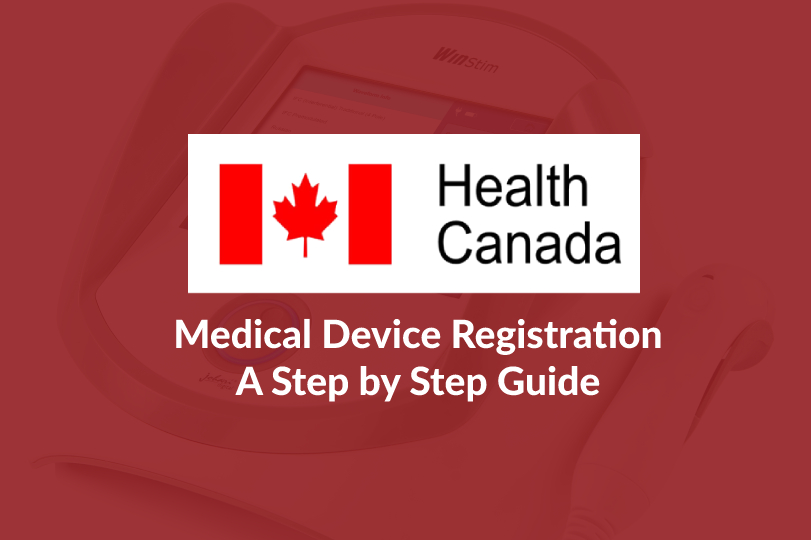The Canadian market has stringent regulations concerning Class I, II, Class III, Class IV Medical Devices. If you are someone looking to expand your product’s reach to Canadian markets, it’s important to understand the regulatory framework, requirements and certifications required to pitch the device to Canadian markets.
Medical Device Registration in Canada
Firstly, the Manufacturers willing to sell their devices in Canada must obtain MDSAP certification
To market the devices in Canada, manufacturers must obtain a license. There are two types of licenses issued by Health Canada:
- MDEL (Medical Device Establishment License) – Class I Medical Devices
- MDL (Medical Device License) – Class II, Class III and Class IV Medical Device
Certification and Timeline
- The Medical Device Manufacturers willing to place their medical devices in the Canadian market must have MDL as well as ISO 13485: 2016.
- Time needed for MDEL – 120 Days
- Time needed for MDL – 15 Days (Class II Medical Device), Class III – 75 days; Class IV – 90 days.
The MDL license is meant for the approval of the device. MDEL on the other hand is given to the manufacturer/distributor/importer company.
Step by Step process to get registration of your medical device in Canada
If you are looking for a manufacturing partner who can help you enter the Canadian markets, then follow these steps:
Step #1:
Determine the class of your Medical Device. A device may fall into Class I, Class II, Class III, or Class IV
Step #2:
All the devices except Class I devices must comply with all guidelines of ISO:13485 certification
Step #3:
For all the devices under ISO: 13485 re-audit is done by an approved Auditing organization. New MDSAP will be issued on successful completion of the audit
Step #4:
Class I Medical Devices must acquire MDEL certification. Class II, III, and IV devices must acquire MDL certification.
Step #5:
Submit the fees and documents as per your device requirement
For Class I Medical Device you’ll require to prepare mandatory procedures documents and pay the health Canada fees
For Class II devices, submit an MDL application, Fees, labeling, Conformity declaration, and other major required documents
Step #6:
Health Canada reviews the application
Step #7:
Once the device is approved the information will be available on the Health Canada website. The MDEL official letter will also be mailed to you.
Health Canada’s Regulatory System
Health Canada’s Regulatory System has crucial licensing requirements for medical devices. The regulatory process is divided into three phases including:
- Pre-Market Scrutiny
- Post-Market Surveillance
- In-process compliance & enforcement activities
-
- The Health Canada Regulatory system classifies Medical Devices based on risk they pose to the human life.
- For an instance Toungue depressors with minimal risk are kept under Class I Medical Device, Pacemakers that are meant for a more serious function and is supposed to be an equipment of high risk are kept under Class IV Medical Device.
- It would be mandatory for Class II, III and IV medical devices to have Medical device license to be sold in Canada. Class I Medical Device manufactured are required to exhibit Medical Device Establishment License.
Action Plan for strengthening safety & quality of Medical Devices
There are three ways in which the Medical device landscape can be strengthened
- Keeping a follow up on the devices being sold in the market
- Making more information accessible to Canadians for use
- Collaborating provinces to deliver authentic on-ground information to manufacturers for delivering better health outcomes
- Promoting open communication and engagement with Canadians
Medical Device Regulatory modifications by Health Canada to improve safety, quality and decision making
1. Investigational testing of Medical devices
The process of investigational testing involves evaluating the unlicensed devices for new uses or in new populations. Currently the rights for Medical devices investigation lies with only manufacturers. The testing can now be undertaken by healthcare professionals, independent researchers and so on.
The changes proposed will help Canadian health professionals to provide more efficient healthcare with necessary amendments.
2. Expanding Scientific Expertise & Evidence Requirements
Health Canada is extremely sensitive about the technical expertise and requirement.
There are multiple segments to review the device specific technicalities. For an instance there are three major segments for assessing the quality of medical devices for:
- Women’s Health
- SaMD (Softwares as Medical Device)
- Devices for Cardiovascular diseases
Stringent methods are being adopted to strategically strengthen the safety, quality and compliance of high-risk medical devices.
3.Vanessa’s Law
The Canadian hospitals, Medical Device Manufacturers and Developers are required to report medical device incidents to the Health Canada. This will improve the decision making process by the end-user and will also improve the outcomes of medical devices.
Improving the access to information for Canadian population will certainly improve the quality of medical devices. Increased transparency will enable manufacturers to make decisions based on past instances to avoid faults, errors and re-calls. Open communication and consultation exercises are important to improve the health outcomes.
In several cases, Health Canada will audit and require more documents for approval.
Johari Digital Healthcare Ltd. is a Medical Device Manufacturing organization with 40+ years of Manufacturing experience. The facility has processes in compliance with MDSAP and ISO 13485 guidelines.
Being an MDSAP certified organization we can assist you in entering 5 major markets including Australia, Brazil, Canada, Japan and the United States.


We wish to obtain MDEL and MDL. Please help us with your services
We plan to obtain MDL for multiple IVDs